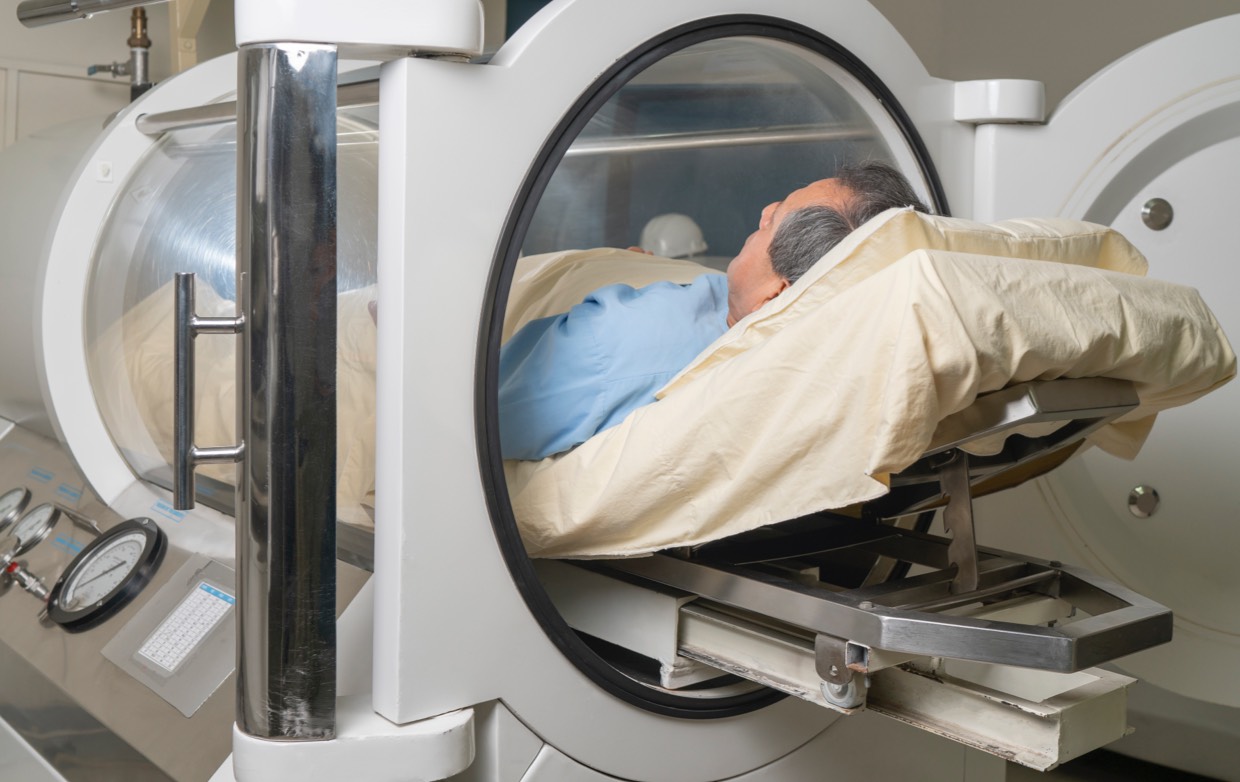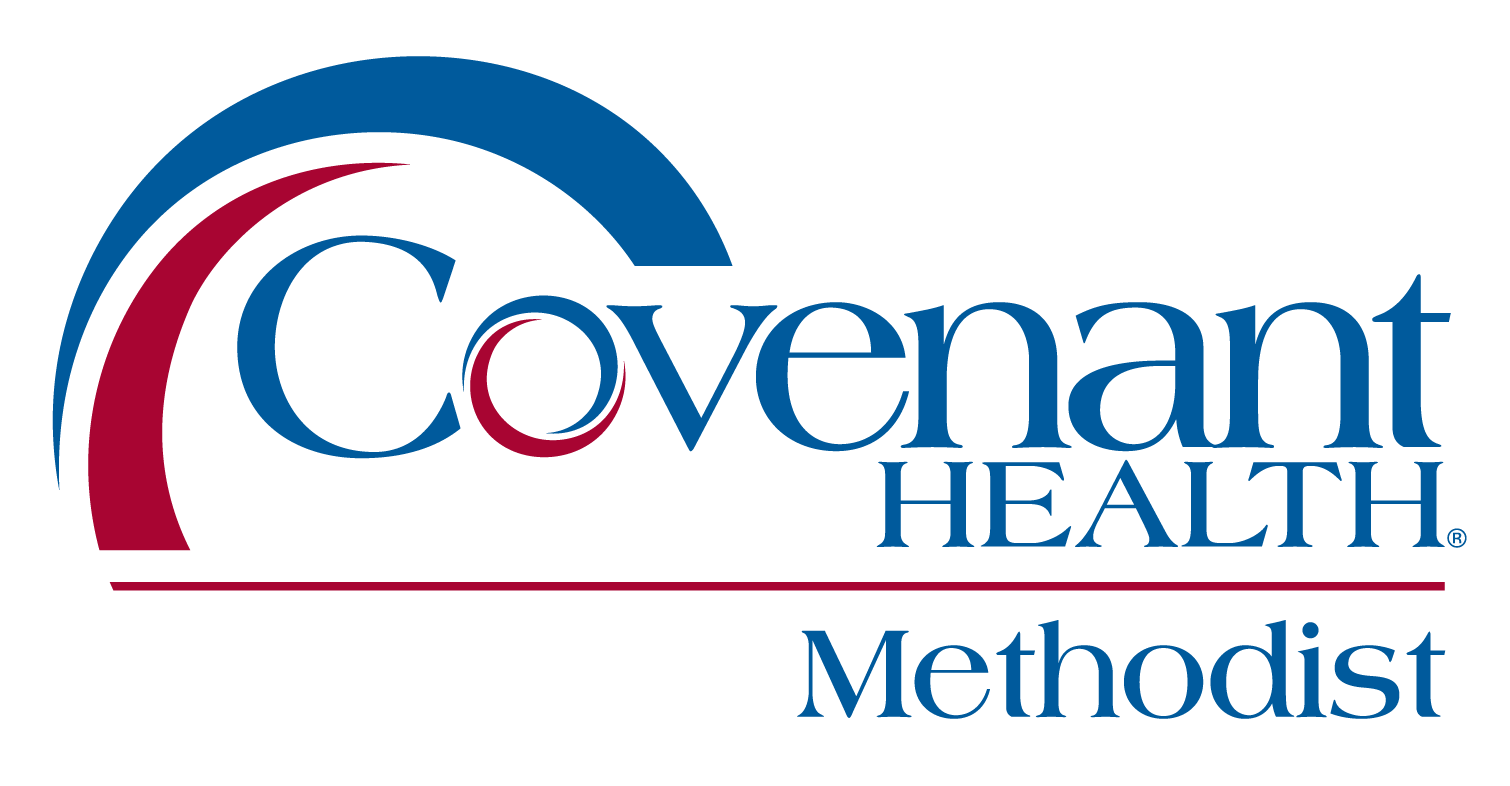Hyperbaric Oxygen Therapy at Methodist Wound Treatment Center

Heal Your Wound, Change Your Life.
Hyperbaric oxygen therapy (HBOT) is one of several advanced wound care modalities provided at the Methodist Wound Treatment Center at Methodist Medical Center in Oak Ridge, TN.
HBOT is used adjunctively with other procedures, such as revascularization, or as a primary treatment when other wound healing options fail.
If your wound healing needs could benefit from additional targeted therapies, our hyperbaric oxygen therapy services are available to assist the people of Tennessee and beyond with the cutting-edge healing modalities you need to thrive.
HBOT allows a patient to breathe 100 percent oxygen two to three times greater than atmospheric pressure and is administered on a daily basis. The result is an increase of 10-15 times in plasma oxygen concentration. This increase translates to arterial oxygen values between 1500 and 2000 mmHg, which produces a four-fold increase in the diffusing distance of oxygen from functioning capillaries.
Additionally, by forcing more oxygen into the tissues of the body, HBOT encourages the formation of new blood vessels. As these new blood vessels develop, the red blood cells start to flow, delivering even more oxygen to the affected area. This creates the optimal environment for the body’s natural healing processes to repair damaged tissue.
When you call Eastern Tennessee home, you can rely on the top-quality hyperbaric oxygen treatment available at Methodist Medical Center in Oak Ridge, TN. We make it easy for the people of Tennessee to receive the wound care services they need.

What Conditions is Hyperbaric Oxygen Therapy Designed to Treat?
Our hyperbaric oxygen therapy treatments at Methodist Medical Center are indicated as a positive treatment modality for a wide range of issues and conditions.
Medicare (CMS) lists the following conditions as approved meeting their approval for coverage of HBOT, in order of decreasing utilization—
- Diabetic wounds of the lower extremities (DWLE)
- Soft tissue radionecrosis
- Compromised flaps and grafts
- Chronic refractory osteomyelitis
- Osteoradionecrosis
- Acute peripheral arterial insufficiency
- Progressive necrotizing infections
- Crush injuries
- Acute traumatic peripheral ischemia
- Gas gangrene
- Acute carbon monoxide intoxication
- Decompression illness/sickness
- Gas embolism
- Cyanide poisoning
- Actinomycosis
Additional UHMS-approved indications for HBOT include—
- Thermal burns
- Exceptional blood loss anemia
- Intracranial abscess
The increase in oxygen obtained through HBOT at Methodist Medical Center in Oak Ridge produces a number of physiological benefits in our patients, including—
- Correction of tissue hypoxia
- Reduction of local edema (swelling)
- Improvement of toxic effects of aerobic organisms
- Improved leukocyte killing ability
- Stimulation of fibroblast replication
- Support of collagen synthesis and angiogenesis
- Enhanced epithelial migration
HBOT services like those provided at Methodist Medical Center of Oak Ridge promote enhanced oxygenation and blood vessel regeneration. Let’s examine each of these benefits in greater detail.
Hyperbaric Oxygenation Benefits
Breathing 100 percent oxygen under pressure causes the oxygen to diffuse into the blood plasma.
This oxygen-rich plasma is then able to travel past the restriction, diffusing up to three times further into the tissue. The pressurized environment helps to reduce swelling and discomfort, while providing the body with at least 10 times its normal supply of oxygen to help repair tissue damaged by the original occlusion or subsequent hypoxic condition.
Blood Vessel Regeneration through Hyperbaric Oxygen Therapy
Hyperbaric Oxygen Therapy forces more oxygen into the tissues, encouraging the formation of new blood vessels. As these new blood vessels develop, the red blood cells start to flow, delivering even more oxygen to the affected area. This creates the optimal environment for the body’s natural healing processes to repair damaged tissue.
Explaining the Role of HBOT for People with Neuropathy and Diabetes
At Methodist Medical Center of Oak Ridge, our wound care team is passionate about helping the people of Tennessee to heal and understand their best treatment options, when it comes to choosing our hyperbaric oxygen therapy treatment.
We work with a lot of patients with neuropathy, and seek to help them gain a better understanding of the role this condition can play in wound development.
Poor circulation and elevated blood sugar levels makes it harder for people to fight infection. As a result, healing even minor wounds can take weeks or even months.
In fact, 25 to 30 percent of patients with diabetes develop foot sores, or ulcers. These issues occur mostly on the ball of the foot or along the bottom of the big toe. About 84 percent of all lower leg amputations are preceded by diabetic foot ulcers, but the risk of amputation can be reduced by 85 percent with early intervention and proper treatment.
“In some cases with active patients they typically do have some sort of trauma but are typically unaware because of neuropathy,” said registered nurse Michelle Bailey, program director of the Wound Treatment Center at Methodist Medical Center in Oak Ridge. “Neuropathy decreases sensation and sometimes advances to no sensation at all. Therefore, the body is not receiving signals that there has been trauma and the patient continues to walk on the area and the initial trauma turns into a full thickness wound.”
This loss of sensitivity is one reason patients with diabetes are strongly encouraged to see a podiatrist at least yearly. Not only can the podiatrist safely remove callus tissue, but can watch for changes such as charcot foot, a serious condition in which the bones can weaken enough to fracture and with continued walking, lead to severe deformity, disability and even amputation. Special diabetic shoes can help prevent that from occurring.
Some wounds, however, require hyperbaric treatment.
“When hyperbaric oxygen is used in diabetics it is primarily to improve oxygen saturation of tissues,” said Bailey. “Many times, diabetic wounds are not getting enough oxygen-rich blood delivered to the site of the wound. After we check the larger arterial vessels and make sure there are no blockages, we often find that there is small vessel disease that is typically not able to be addressed surgically. Therefore, hyperbaric oxygen is a good choice. Because oxygen is a gas, the effectiveness of the HBO treatments is that the gasses are pushed into the tissue not just delivered through the bloodstream.”
Our dedicated team is committed to providing you the best information and care, when you choose our hyperbaric oxygen therapy services at Methodist Medical Center in Oak Ridge, TN.
Contact Methodist Medical Center of Oak Ridge
For more information about our advanced wound care and hyperbaric oxygen therapy services, contact us today at 865-835-3740, or by fax at 865-835-3742. You can also reach out via our online contact form.
Methodist Medical Center
- Hospital
- Laboratory
- Emergency Room

